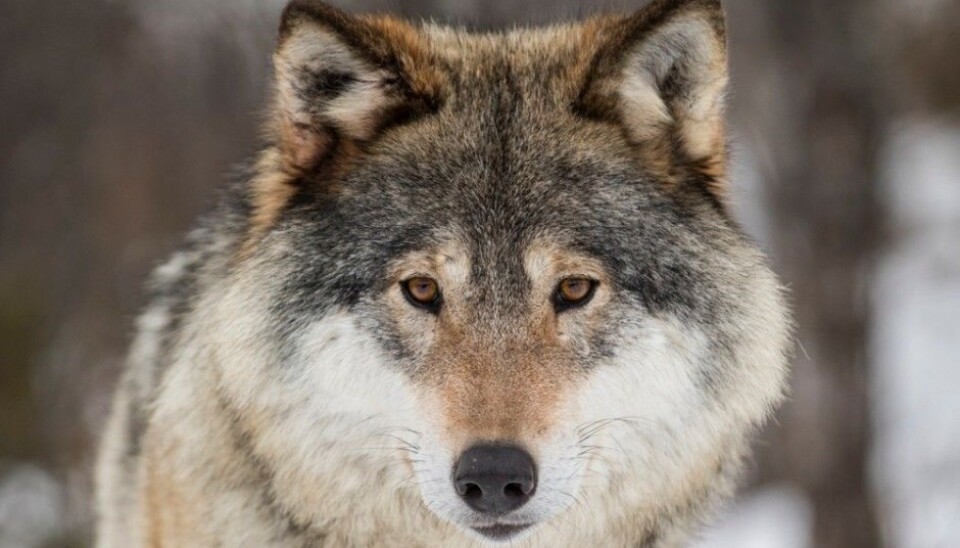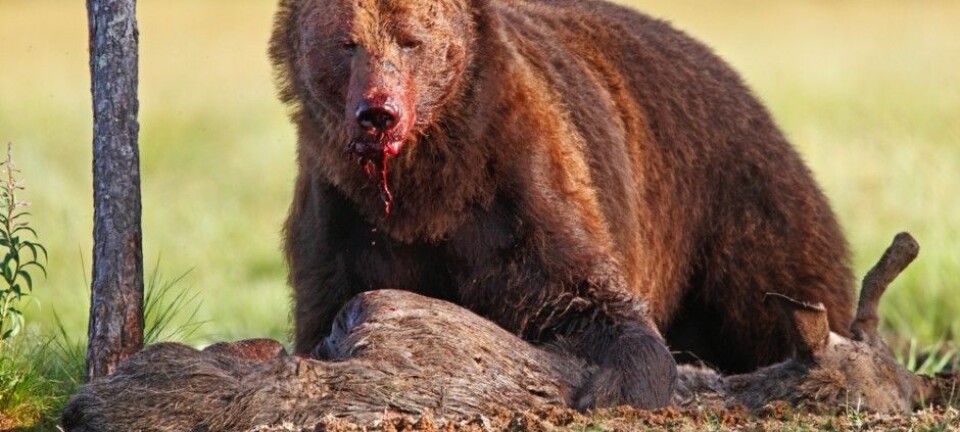
Where did Norwegian wolves originate — and are they hybrids?
A new look at the genetics of wolves in Norway is in the works. An initial look to establish where the controversial animals have come from hasn’t provided a definitive answer.
In 1978, twelve years after the Scandinavian wolf population was declared functionally extinct, a handful of wolves was reported to have come west from Finland/Russia to take up residence on the Norwegian-Swedish border. In the decades since, that population has grown and expanded — along with opposition to the animals, especially in Norway.
Kjetill Jakobsen, a professor at the University of Oslo, has recently investigated the genetics of both wolves and dogs on behalf of Norskog, a membership organization for Norwegian forestland owners.
The reason Norskog commissioned the research was because of claims that the appearance and behaviour of today's wolves is different from what might be expected of a wild population, the group said in a press release.
Among the factors cited for this contention is the Scandinavian wolf’s similarity to dogs in its yellowish colour, round eyes, pointed ear shape, white claws and tail tip.
Another reason for the research was to settle the question of where the wolves actually came from, because some wolf opponents have claimed the animals were smuggled into Norway and did not arrive on their own.
A hint of dog
Jakobsen believes that his preliminary research does not allow him to establish where the Scandinavian wolf comes from. The genes of the Scandinavian wolf are quite similar to wolves from the rest of Europe, he said.
On the other hand, his research does suggest that there has been no recent inbreeding between wolves and dogs — at least not in the material he and his
colleagues have examined.
"We did find some dog variants, and that's natural. The wolf is the origin of our domestic dog breeds,” he said. “But there is no more interbreeding with dogs in the Scandinavian wolf population than is found in other populations.”
Both new and old wolves
Jakobsen and his colleagues at the University of Oslo looked at 10 wolves that had been culled in recent years and four wolves that were born in the 1960s. These were compared to wolves from Sweden, two from the east, in Russia and two from Slovakia. In addition, the researchers studied dogs from Norway and wolf dogs from the Czech Republic.
"Of course, we wanted a bigger sample size, but the material we studied wasn’t that small either," Jakobsen said.
Nevertheless, he still believes that he doesn’t have enough data to say with certainty where the Scandinavian wolf population came from.
To protect or not
The question of the origins of the Scandinavian wolf population has been a hot debate in Norway for many years.
The reason the issue of origins is so controversial has to do that the Bern Convention, which protects wild populations of European plants and animals. Under the Bern Convention, Norway has an obligation to protect its wolf population, as long as it migrated here naturally.
The research on this issue to date has established that the wolf travelled to Norway on its own from the north of Finland and Russia.
However, this research has been attacked by wolf opponents, who claim that the wolf was smuggled to Norway.
Two researchers at the Norwegian University of Life Sciences, Øyvind Øverli and Torstein Steine, have also questioned the wolf's genetic origins. However, one Norwegian weekly, Morgenbladet, has reported that the two scientists, who have not studied wolves, have been used by organizations and parliamentarians who are opposed to having wolves in Norway.
New research supports previous findings
On behalf of the Storting, the Norwegian Environment Agency recently submitted a report that addressed the questions of hybridization and origins of the Scandinavian wolf population.
Three independent American researchers combed through existing research on these questions. Their conclusion, cited by the Environment Agency, was that "the current literature is adequate to conclude that the existing Norwegian/Scandinavian population derives from immigration from Finland and Western Siberia. In addition, the existing population does not show evidence of hybridization with dogs."
Nevertheless, Arne Rørå, Norskog’s Managing Director, stated in the organization’s press release that this research review shows the opposite of what was established by the University of Oslo’s research.
“Norskog's report points out that genetic signatures from the majority of the male animals that founded the Scandinavian wolf population cannot be found in the genetic material currently available from Finland and Russia,” Rørå says in the press release.
An additional study
The Environment Agency is now preparing to fund a new survey to look at an expanded sample of genetic material. The call for proposals to do the study will be announced nationally and internationally.
"The work will probably require what is called a whole-genomic method, or an approach based on very extensive DNA mapping. There will probably be a need to collect new samples, and old samples must be re-analysed. This work may take several years,” Ellen Hambro, Director General of the agency, said in September.
Øystein Flagstad, a researcher at the Norwegian Institute for Nature Research, was involved in a large study in the early 2000s that showed the Scandinavian wolf population had its origins in a handful of individuals that came from Russia and Finland in the 1980s and 1990s.
"This was a solid study that is well-known and is often referenced,” he said. Nevertheless, he welcomes the new study.
“I know that new surveys using new high resolution methodology can provide an even more nuanced picture of the origins of the Scandinavian wolf population,” he said.
-------------------------------------
Read the Norwegian version of this article at forskning.no
































